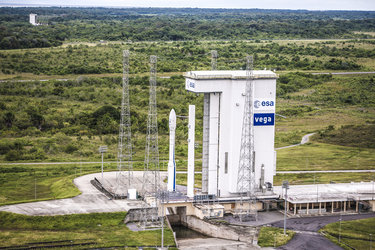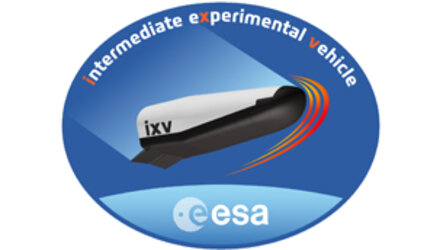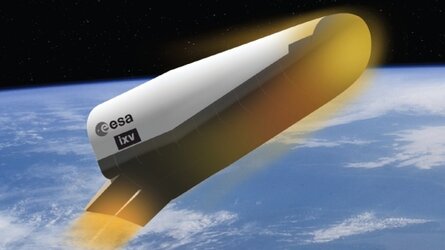Vega ready to launch spaceplane
On its first launch of the year, Europe’s Vega rocket will loft ESA’s unmanned spaceplane to test reentry technologies for future vehicles.
The launch campaign has resumed, aiming for a liftoff on 11 February from Kourou, French Guiana to release ESA’s Intermediate eXperimental Vehicle, IXV, into a suborbital trajectory.
This mission will provide vital flight data for Europe to forge ahead in developing systems and advanced technologies for transportation systems of the future.
On 23 October, the decision to postpone the launch was taken by the launch authorities as a result of safety concerns that required additional analysis. Finding an alternative trajectory solved the issue.
“Launch preparations have resumed,” said Jose-Maria Gallego Sanz, ESA’s IXV launch campaign manager. “Batteries that were removed from IXV are being taken from cold storage, charged and reinstalled. No additional tests are needed – IXV is ready to fly.”
The mission will last 100 minutes from liftoff to splashdown. Weighing around two tonnes and the size of a car, IXV is a snug fit inside Vega’s protective fairing. The two-piece shell will open to release the spaceplane at an altitude of 320 km.
IXV will coast to up to 420 km and then begin its reentry phase, recording a vast amount of data from a large number of conventional and advanced sensors.
The entry speed of 7.5 km/s at an altitude of 120 km will create the same conditions as those for a vehicle returning from low orbit. IXV will glide through the atmosphere at hypersonic speeds to test new European reentry technologies before parachutes deploy to slow the descent for a safe splashdown in the Pacific Ocean.
The Nos Aries recovery vessel is now stationed in Flamenco Island Anchorage in Panama. Over the last month, the crew have been testing the equipment for hoisting IXV out of the water.
ESA’s recovery team will board on 25 January for the ship to set sail on the last leg of its journey to the recovery spot.















 Germany
Germany
 Austria
Austria
 Belgium
Belgium
 Denmark
Denmark
 Spain
Spain
 Estonia
Estonia
 Finland
Finland
 France
France
 Greece
Greece
 Hungary
Hungary
 Ireland
Ireland
 Italy
Italy
 Luxembourg
Luxembourg
 Norway
Norway
 The Netherlands
The Netherlands
 Poland
Poland
 Portugal
Portugal
 Czechia
Czechia
 Romania
Romania
 United Kingdom
United Kingdom
 Slovenia
Slovenia
 Sweden
Sweden
 Switzerland
Switzerland






























